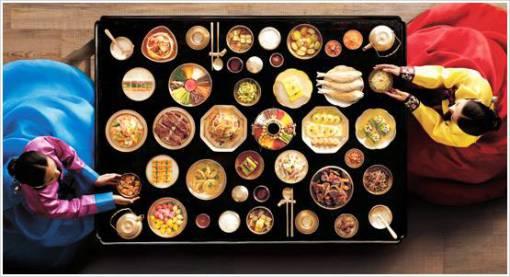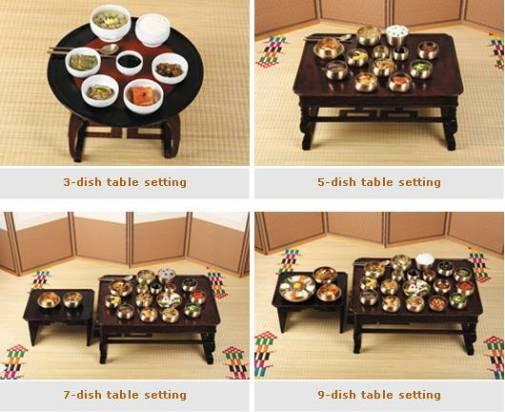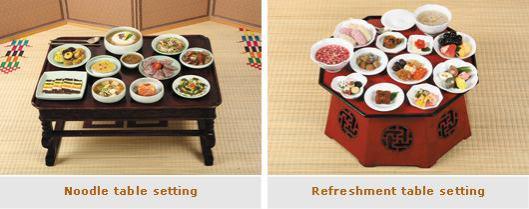Table settings for Korean Food~ Post from #CommunityKorea
In the traditional Korean table setting, all dishes are served on one table at the same time as an open space pattern. The basis of the table setting is for one person. Table settings are classified as bap-sang (regular dining table) with cooked rice as the main dish, juk-sang (porridge table), myeon-sang (noodle table), juan-sang (liquor table), dagwa-sang (refreshment table), and gyoja-sang (large dining table).

1) Dining table setting
The ordinary dining table setting features cooked rice as the main dish. Banchan (side dishes) are arranged according to the recipes, ingredients, colors and temperature of the food with emphasis on balance. There are 3, 5, 7, 9, and 12-dish table settings according to the number of side dishes.

2) Porridge table setting
This table setting features porridge as the main dish. Non-salty and mild side dishes such as nabak-kimchi (radish water Kimchi), bugeo-bopuragi (seasoned dried pollack flakes) and jeotguk-jjigae (salt-fermented seafood stew) are good accompaniments to the porridge.
3) Noodle table setting
In the noodle table setting, noodles, tteokguk, or dumplings are the main dish. This table setting is good for a lunch or a quick and simple meal.
4) Liquor table setting
The liquor table setting entertains guests with liquor. Some side dishes served with the liquor include dried meat or fish slices, jeon, pyeonyuk, jjim, jeongol, saengchae, Kimchi, fruit, rice cakes and/or Korean cookies.
5) Refreshment table setting
The refreshment table setting is for enjoying non-alcoholic beverages. Gaksaekpyeon, yumilgwa, yugwa, dasik, suksilgwa, saengsilgwa, hwachae and/or cha (tea) may be served.
6) Large dining table setting
This table setting serves food to many people at a large table at the same time on holidays or for ceremonies.

Filed under: Culture, K-Food, K-LifeStyle Tagged: k-food, korean culture, korean food, table setting



